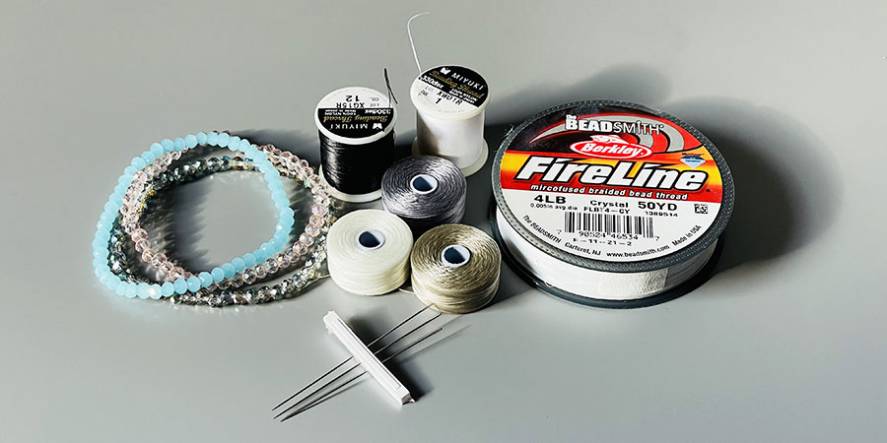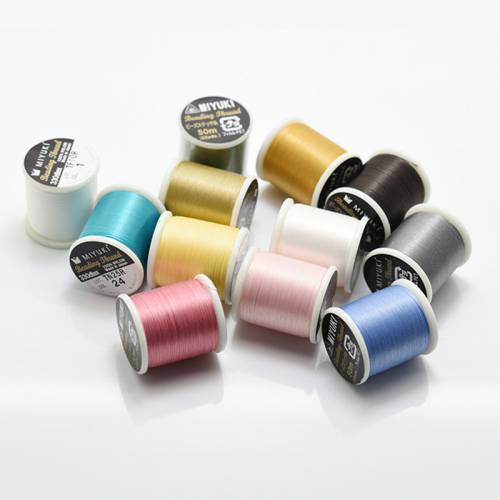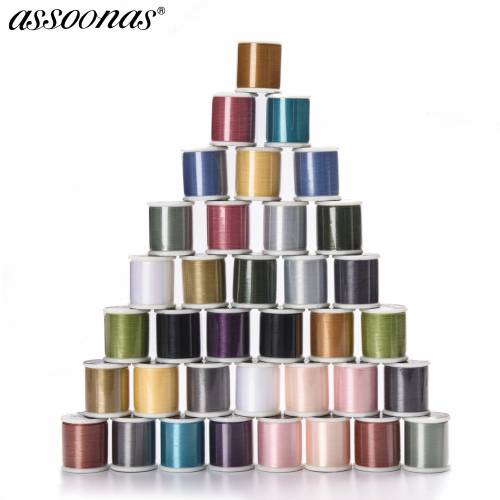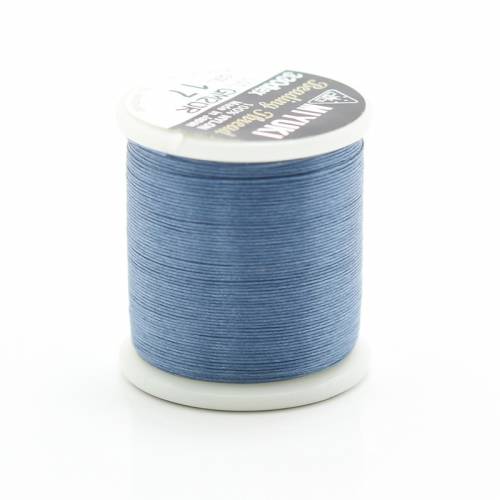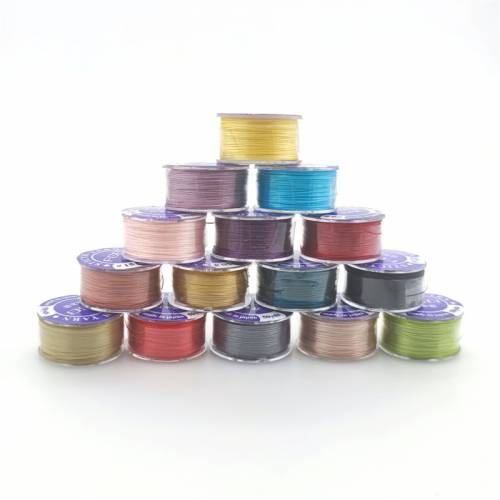Like many other hobbies, creating your own unique jewelry pieces requires a tiny investment of both time and money to find the right supplies for your projects. From personal experience, I can tell you that beading can feel like a thousand-step journey for newcomers, especially if you don’t have any kind of guidance or advice.
When I was a beginner I had a hard time finding the right beading thread. I ended up spending a lot of cash on various threads which were not suitable for my jewelry designs and having to redo my work frequently. The question is...which one should you purchase? There are many types of beading thread, from many brands, so choosing the best thread for your beading projects may be challenging.
Sewing thread or fishing line, for example, may work for some designs, but not for others. I will focus here on three types of thread I am currently using: Fireline, Nymo and Miyuki.
Can you use regular thread for beading?
Tips!
The pattern and type of stitching set the tone in any jewelry (necklace, bracelet, earrings). So before you start, think about the finished piece of jewelry…how would you like to behave and lay down? Each beading thread has its own special properties. Textile threads are used to create soft, flexible patterns, while stiff works are obtained by using nylon or monofilament based thread.
Which thread is best for you?
Fireline, Nymo and Miyuki are all strong and high-quality threads, but each has its own set of advantages and disadvantages, so I would say beading thread is a personal choice in the end. For example, Nymo and Miyuki are nylon threads, specially designed for seed beads. These types of threads are more similar to sewing cottons and, as a result, they are more flexible compared to Fireline beading thread, which is monofilament based.
I like to use Nymo and Miyuki for bead embroidery and for making jewelry with tassels and fringe. Although these threads are strong, they also have a natural stretch to them. On the other hand, Fireline, is an excellent choice for projects that require a good tension and is great for beads that have sharper edges like Miyuki Delicas, due to its superior strength and resilience to being worn out. It is, without a doubt, my personal favorite. 😉
Understanding the positives and negatives of each beading thread can help you make a more informed decision and find the thread that is right for the work you are looking to do.
Fireline beading thread - A beader’s favorite
Pros
- The thread is pre-waxed and thin, but very strong
- Being fray resistant, it allows fixing mistakes
- Its coating creates a smooth surface that facilitates needle threading
- It does not tangle and stretch out of shape when under pressure
- Less prone to knotting (the knots are relatively easy to undo)
- Available in different thicknesses, 4LB, 6LB, 8LB being the most commonly used
- Ideal for beads with sharper edges, such as bugle beads, Miyuki Delicas, Swarovski crystals, cut glass beads
- Can be used for any beading stitch: peyote, brick, ladder, herringbone and more
- Fireline beading thread gives a professional finish to any jewelry design
Cons
- Only three colors available (Crystal, Smoke, Black satin), but Crystal variation is semi-transparent and works well with most beads, regardless of their color.
- One disadvantage of the smoke color is that it rubs off on your hands as you work with it. But don't worry, it won't stain!
- Even though it is more expensive than Nymo or Miyuki, Fireline is worth every penny.
Nymo beading thread – A popular choice
Pros
- One of the best things about Nymo is its wide range of colors and sizes (OO, O, B, D)
- This thread is flexible and a perfect choice for bead embroidery, fringe or tassels
- It is a cheaper option
- Nymo thread is widely available
- It's ideal for beginners who want to learn how to bead
Cons
- Its natural stretch may be a challenge for some projects, especially for those that need a good tension
- This thread has a greater tendency to knot and fray
- Before using it, Nymo may need conditioning with wax to avoid breaking
Miyuki beading thread – 100% Nylon thread
Pros
- Available in many beautiful colors, so it blends well with all the beads
- It is a smooth thread which does not need waxing
- Miyuki beading thread is ready to be used with small beads
- This delicate yet strong thread is ideal for techniques that require many passes through the same bead
- Based on my personal experience, Miyuki thread is slightly stronger than Nymo thread
Cons
- There aren't many sizes to choose from because it only comes in one: 330DTEx
- Tends to be more susceptible to fraying
- Not available in many stores
- Miyuki beading thread is prone to breaking, especially when used to stitch beads with rough edges.
- The thread may stretch as you work and this can cause problems with beading tension
- Tends to be more expensive compared to Nymo thread
Most jewelry makers develop their own personal preference for beading thread, depending on the complexity of the bead items they are creating. If you're just starting out making relatively basic jewelry, such as simple earrings, bracelets or one-stand necklaces, try as many different threads as you can to find out which one suits you best. I have summarized the main properties of Fireline, Nymo and Miyuki beading thread and I hope this will help you make the best decision for yourself.
| Fireline | Nymo | Miyuki | |
|---|---|---|---|
| Available in a wide range of colors | ✅ | ✅ | |
| Available in many sizes | ✅ | ✅ | |
| Natural stretch | ✅ | ✅ | |
| Pre-waxed | ✅ | ✅ | |
| Tendency to fray | ✅ | ✅ | |
| Good tension | ✅ | ||
| Prone to knotting | ✅ | ✅ | |
| Cheaper option | ✅ | ✅ | |
| Ideal for beads with sharper edges | ✅ |

